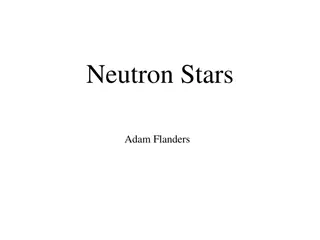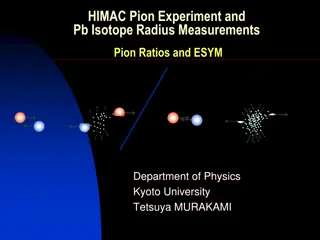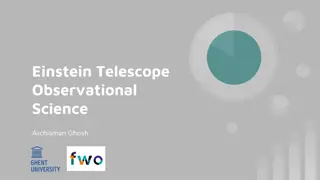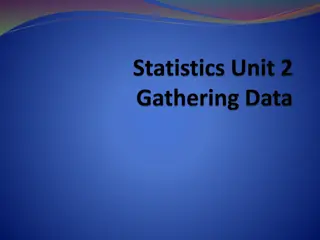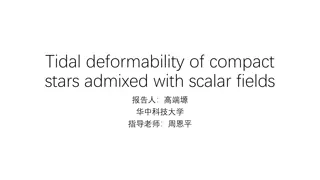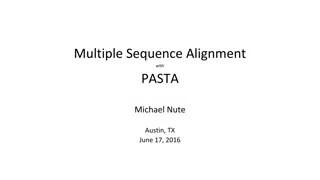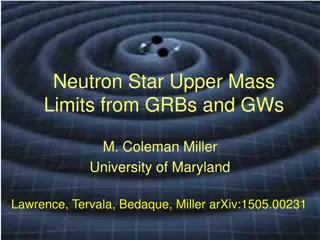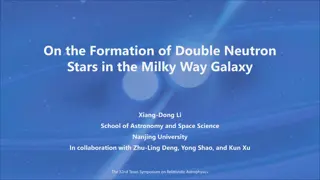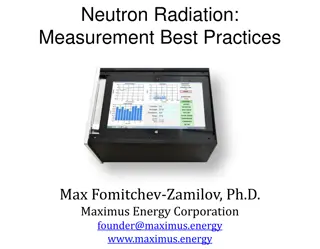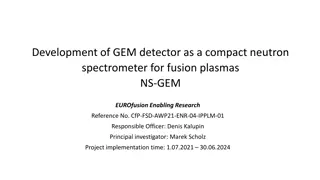Exploring Pasta Phase in Neutron Stars: Upper Limits and Observational Effects
Investigating the impact of pasta phase on neutron star observables, this research by William Newton, Michael Gearheart, Josh Hooker, and Bao-An Li discusses the crust composition, transition densities, and compressible Liquid Drop Model (CLDM). The study explores the uncertainties in symmetry energy, pure neutron matter EoS, pasta effects, and core transition densities, offering insights into crustal properties and observational limits.
Uploaded on Nov 27, 2024 | 0 Views
Download Presentation

Please find below an Image/Link to download the presentation.
The content on the website is provided AS IS for your information and personal use only. It may not be sold, licensed, or shared on other websites without obtaining consent from the author. Download presentation by click this link. If you encounter any issues during the download, it is possible that the publisher has removed the file from their server.
E N D
Presentation Transcript
Upper limits on the effect of pasta on potential neutron star observables William Newton Michael Gearheart, Josh Hooker, Bao-An Li
Crust composition and transition densities according to the liquid drop model William Newton Michael Gearheart, Josh Hooker, Bao-An Li
Introduction Liquid drop model: what and why? Range of crustal properties from uncertainties in symmetry energy, low density pure neutron matter EoS, residual model effects Pasta, core transition densities Free neutron fraction (A,Z) Given liquid droplet model pasta predictions, is there any prospect of setting interesting observational limits? > Mountains > Torsional oscillations
Compressible Liquid Drop Model (CLDM) PROS: Physically transparent Easy and quick to calculate compositional quantities (A,Z,Xn...) for use in macroscopic NS models Lots of CLDM crust models out there: which one to use? CONS: Semi-classical, macroscopic; no shell effects WS approximation not good at the highest densities of the inner crust. Exactly how wrong does CLDM get near the crust-core transition?
Compressible Liquid Drop Model (CLDM) Surface energy Uniform nuclear matter EoS
Nuclear Matter EoS MSL SCH2 Chen, Cai, Ko, Xu, Chen, Ming 2009
Nuclear Matter EoS Data point: Warda, Vinas, Roca-Maza, Centelles 2009
Crust-core and spherical-pasta transition densities Liquid drop crust-core transition agrees well with stability analyses
Upper limits on the effect of pasta on potential observables
Pasta effects: mechanical Crust shear modulus (Strohmayer et al 1991)
Pasta effects: mechanical Upper limit on the effect of pasta on mechanical phenomena: Set pasta = 0 Good approx. to take at deepest layer of crust; I. Solid pasta at crust-core boundary II. Liquid pasta at spherical-pasta boundary MOUNTAINS CRUSTAL TORSIONAL MODES Ushomirsky, Cutler, Bildsten MNRAS 319, 2000
Deformation from mountain on crust Liquid pasta
Conclusions Liquid drop model predicts a range for the transition densities and composition; current nuclear data favours, e.g.: 0.11 < ncrust-core< 0.05 fm-3 0.07 < npasta < 0.05 fm-3 Symmetry energy (magnitude and slope), dominates the uncertainty in the range; correlated with constraints on low density PNM for a given form of the nuclear matter EoS Large pasta layer favored by current nuclear data Estimates of the maximal effect of pasta on mechanical properties of the crust suggest a significant contribution of the pasta layer to observational phenomena such as SGR QPOs, potential GWs from mountains Similar (though slightly larger) signature to crustal superfluid Relatively clean signature in maximum mountain size OPEN ISSUES/FUTURE What is the shear modulus at the bottom of the inner crust? How do the liquid drop predictions compare with microscopic calculations (e.g. 3DHF); can it be used as a guide? Pasta contribution to crustal moment of inertia and moment of inertia of crustal superfluid neutrons (glitches); bubble cooling;
Surface Energy Lattimer et al, Nucl. Phys A., 1985 Fits to data: 0 1.1 MeV fm-2 Fits to data and modeling: and p 3 Curvature is also included:


